If you’re on Windows 10 and you find that your audio or sound is not working properly, you’re not alone. Many Windows users are reporting that their sound is not working or chopping and so many more problems.
But no worries, it’s usually not a hard problem to solve. Here are 5 of the most effective methods that will help you with not working audio problem. You may not have to try them all; just work your way down and find the one works for you.
Method 1: Check cable connection and volume
Method 2: Turn off Audio Enhancements
Method 3: Update sound driver
Method 4: Uninstall driver via Device Manager
Method 5: Try generic audio driver provided by Windows 10
1: Check cable connection and volume
Before we do any changes to the software, we need to rule out some possible human error. So please check to see if:
1) your speaker and headphone connections are with loose cables or wrong jack;
2) your power and volume controls are up;
3) the volume controls on the apps are on and up;
4) headphones are plugged in: your speakers might not work if you have the headphones in.
2: Turn off Audio Enhancements
Audio enhancement feature is supposed to make your sound card work at its peak, but unfortunately, not all sound card hardware work well when it’s on. You can turn it off by:
1) On your keyboard, press the Windows logo key and R at the same time, type control in and press Enter.
2) View by Large icons, click Sound.
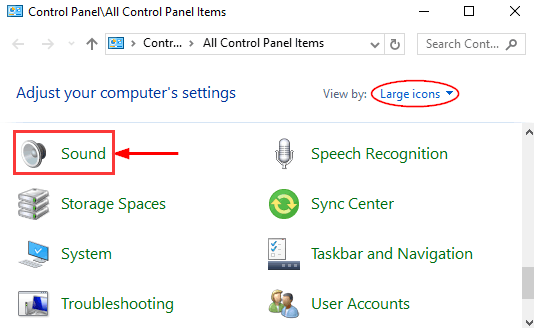
3) In the Playback tab, right-click Default Device you have and click Properties.

4) Go to the Enhancement tab, tick the box for Disable all sound effects.
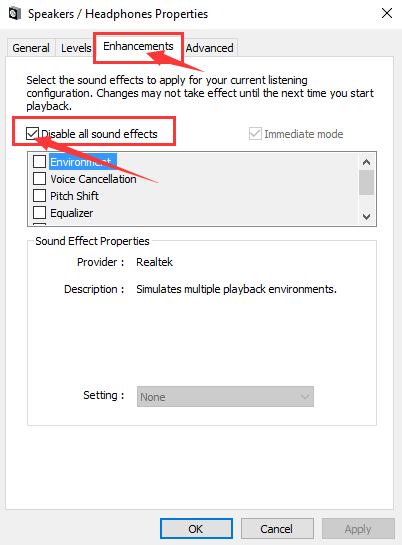
5) See if your sound is back. If you still cannot get your sound back, choose Cancel here, and then repeat 2) and 3) with your other default device and have a try again.
3: Update sound driver
If no good signs are shown after the first two methods, it’s likely that you’re using the wrong driver altogether.
There are two ways you can get the right driver for your sound or audio card: manually or automatically.
Manual driver update – You can update your audio driver manually by going to the manufacturer’s website for your audio card, and searching for the most recent correct driver for it. Be sure to choose only driver that is compatible with your variant of Windows 10.
Automatic driver update – If you don’t have the time, patience or computer skills to update your audio drivers manually, you can, instead, do so automatically with Driver Easy. Driver Easy will automatically recognize your system and find the correct drivers for your exact audio card, and your variant of Windows 10, and it will download and install them correctly:
You can update your drivers automatically with either the FREE or the Pro version of Driver Easy. But with the Pro version it takes just 2 clicks:
1) Download and install Driver Easy.
2) Run Driver Easy and click the Scan Now button. Driver Easy will then scan your computer and detect any problem drivers.

3) Click the Update button next to the audio device to automatically download and install the correct version of this driver (you can do this with the FREE version).
Or click Update All to automatically download and install the correct version of all the drivers that are missing or out of date on your system (this requires the Pro version – you’ll be prompted to upgrade when you click Update All).

4: Uninstall driver from Device Manager
If you have faulty driver installed, problem like no sound coming out from your speaker is inevitable. To fix it:
1) On your keyboard, press the Windows key and X at the same time, then click Device Manager.
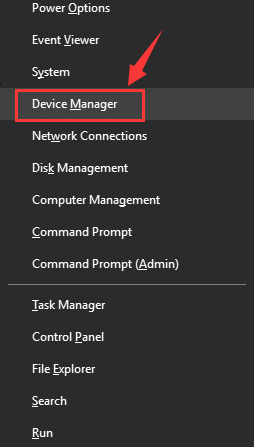
2) Expand Sound, video and game controllers.
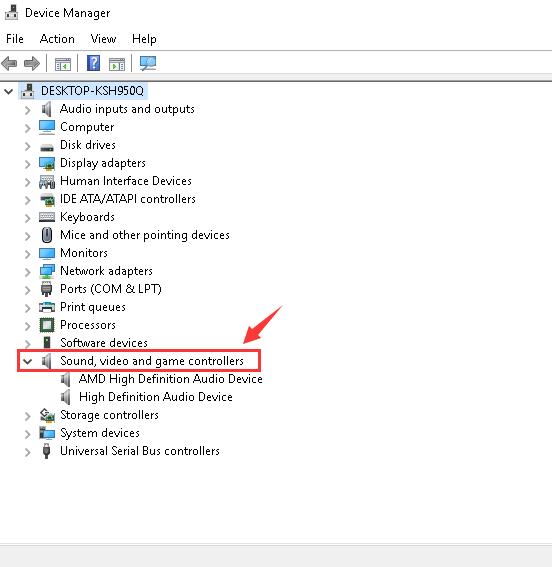
3) Right-click your sound card driver, then click Uninstall.
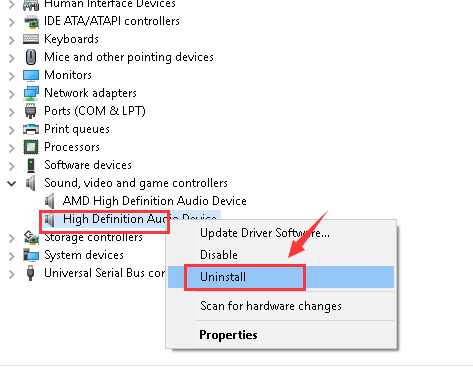
Click OK at the prompted notification to continue.

4) When the uninstall completes, restart your computer.
Windows will then help you reinstall the driver.
And if this still don’t work, please try the next step where we try using the generic audio driver that comes with Windows.
5: Try generic audio driver provided by Windows 10
1) On your keyboard, press Windows key and X at the same time, then click Device Manager.

2) Expand Sound, video and game controllers.

3) Right-click your sound card driver, then click Update Driver Software….
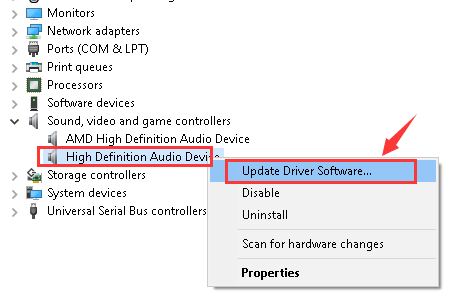
4) Click Browse my computer for driver software.
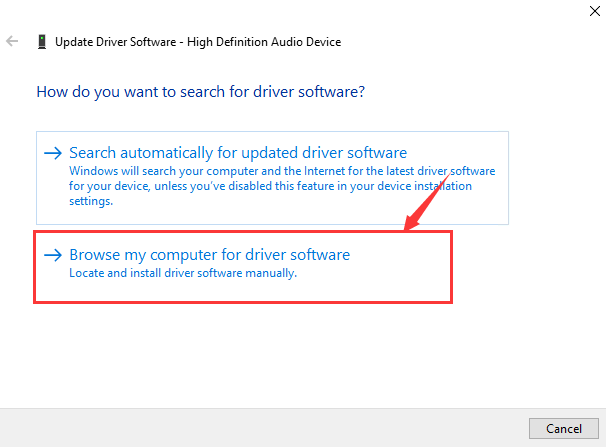
5) Click Let me pick from a list of device drivers on my computer.
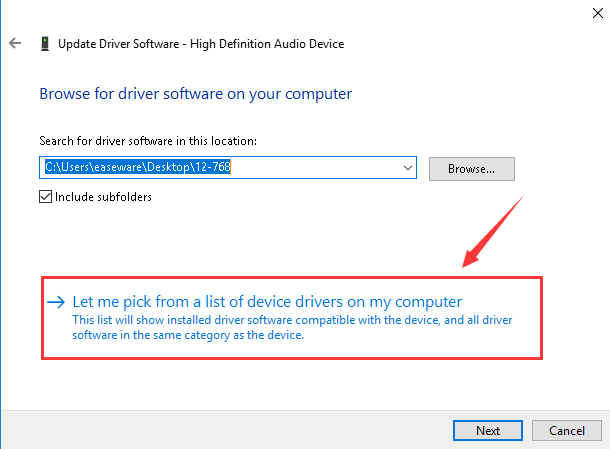
6) Click High Definition Audio Device, and Next.
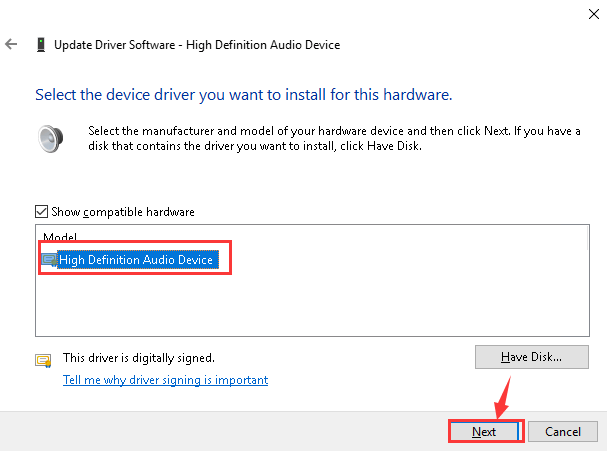
Click Yes at this prompt and continue.
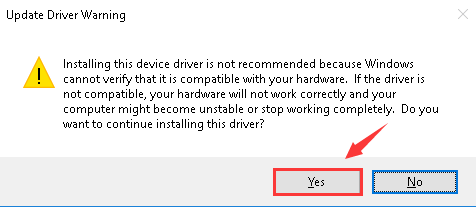
7) Now you should be able to see that the driver you are having now is the generic audio driver provided by Windows 10. The name of which is High Definition Audio Device.

Check if your sound is back.





